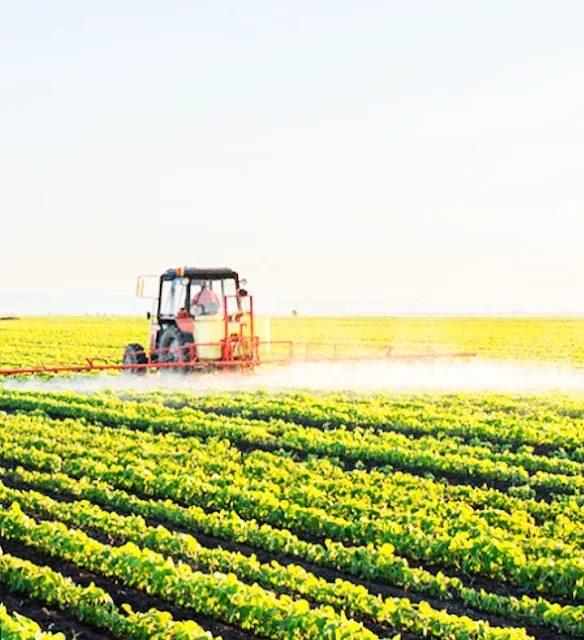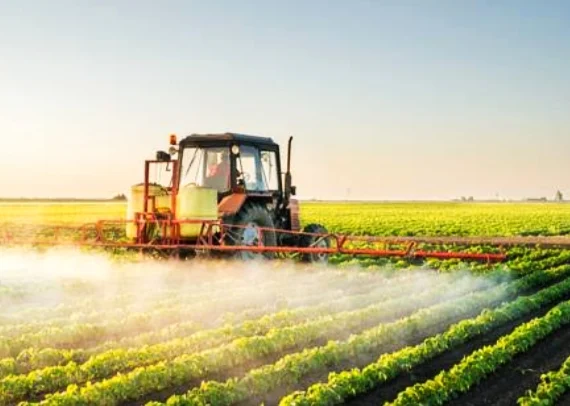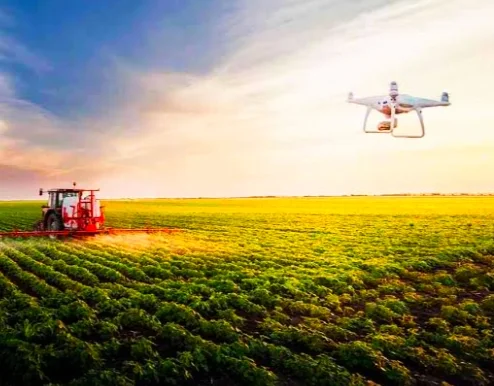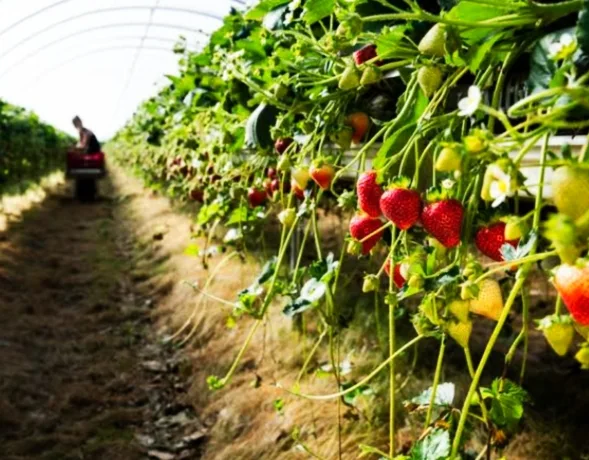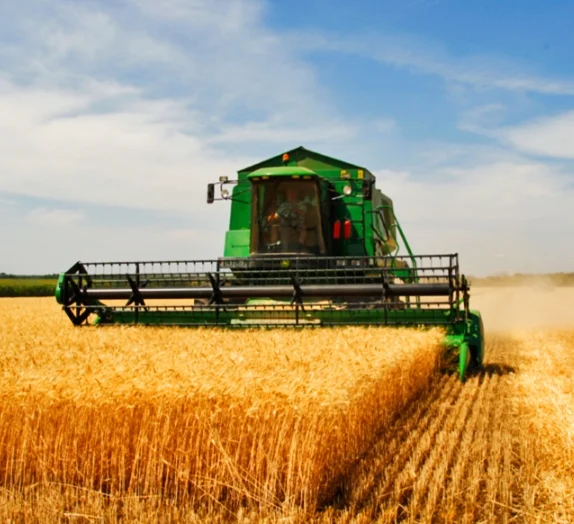The Rise of Agritech Industry in Asia
The agricultural sector in Asia is undergoing a significant transformation driven by innovation and technology.
This trend, known as agritech, is revolutionizing the way food is produced, managed, and distributed across the continent. From precision farming techniques to e-commerce platforms for farm produce, agritech offers a multitude of benefits to address the challenges faced by Asian agriculture.
Key Areas of Focus in Asian Agritech
| Area | Description | Example |
|---|---|---|
| Precision Agriculture | Utilizes sensors, data analytics, and automation to optimize resource use and improve yields. | Sensors monitoring soil moisture for targeted irrigation. |
| Agricultural Robotics | Leverages robots for tasks like planting, harvesting, and weed control, reducing labor costs and increasing efficiency. | Autonomous drones for crop spraying. |
| Fintech for Agriculture | Provides financial services like microloans and crop insurance tailored to the needs of farmers. | Mobile app-based platforms for loan applications. |
| E-commerce for Farm Produce | Connects farmers directly to consumers or businesses, reducing post-harvest losses and increasing profit margins. | Online marketplaces for selling fresh produce. |
| Agricultural Biotechnology | Develops improved crop varieties and livestock breeds for enhanced resilience and productivity. | Genetically modified crops resistant to pests and diseases. |
This table provides a glimpse into the diverse landscape of agritech solutions being implemented in Asia. As the industry continues to evolve, we can expect even more groundbreaking innovations that will reshape the future of Asian agriculture.
Agritech Industry in Asia: Statistics Data
The Asian agritech industry is experiencing rapid growth, driven by factors like increasing demand for food, a growing population, and the need for sustainable agricultural practices.
Here's a look at some key statistics to illustrate this trend:
-
Market Size:
- The Asia Pacific agricultural technology market is projected to reach a value of USD 30.8 billion by 2025 [Source: Straits Research].
- Globally, the agritech market is expected to reach USD 75.8 billion by 2032, with a Compound Annual Growth Rate (CAGR) of 13.1% [Source: Spherical Insights].
-
Investment:
- India's agritech sector boasts around 450 companies, with the industry growing at a rate of 25% per year [Source: Straits Research].
- Southeast Asia has witnessed a surge in venture capital investment in agritech startups, with companies like Ricult securing funding for AI-powered agricultural solutions [Source: TYM TOH - Medium].
-
Challenges and Opportunities:
- Despite the growth, challenges like farmer adoption of new technologies and rural internet connectivity need to be addressed [Source: Tech Collective SEA].
- Agritech offers immense potential for improving food security, reducing food waste, and promoting sustainable agricultural practices, making it a crucial sector for Asia's future.
Additional Resources:
- You can find more detailed reports and statistics on the Asian agritech market from reputable research firms like FICCI (Federation of Indian Chambers of Commerce and Industry) and BIS Research (in collaboration with Statista).
Agritech Industry in Asia: Statistics Data
Here's a table summarizing the key statistics of the Asian agritech industry:
| Statistic | Description | Source |
|---|---|---|
| Market Size (Asia Pacific) | Projected value by 2025 | Straits Research |
| Market Size (Global) | Projected value by 2032 (CAGR 13.1%) | Spherical Insights |
| Investment (India) | Number of agritech companies | Straits Research |
| Investment (India) | Annual growth rate of the agritech sector | Straits Research |
| Investment (Southeast Asia) | Trend in venture capital funding | TYM TOH - Medium (Article) |
| Challenges | Examples | Tech Collective SEA (Article) |
| Opportunities | Examples | (This section can be filled with brief descriptions of opportunities like improved food security, reduced food waste, etc.) |
Additional Resources:
- FICCI (Federation of Indian Chambers of Commerce and Industry)
- BIS Research (in collaboration with Statista)
Please note: While I haven't included specific data points for every category (e.g., number of agritech jobs created), the provided statistics showcase the overall growth and investment trends in Asian agritech.
Agritech Industry in Asia: Leading Country by Investment
While Asia boasts a dynamic agritech landscape with several strong contenders, China currently leads the region in terms of total investment.
Here's a breakdown leading Country in Asia Agritech Industry:
- China:
- Market Size: Estimated at USD 14.7 billion in 2023 [Source: IHS Markit]
- Investment: Received over USD 7 billion in venture capital funding for agritech startups in 2022 alone [Source: China Daily]
While other countries are making significant strides, China's sheer market size and heavy influx of venture capital funding solidify its current leadership position. However, the landscape is constantly evolving, with other contenders like India showing impressive growth.
Here's a glimpse into the investment trends of other prominent players:
-
India:
- Investment: Witnessed a surge in agritech investment, with funding reaching over USD 1.8 billion in 2023 (Source: YourStory)
-
Southeast Asia:
- Investment: The region saw a substantial increase in agritech funding, exceeding USD 1.3 billion in 2023 (Source: DealStreetAsia)
It's important to note that leadership in agritech isn't solely defined by investment. Innovation and the impact of these technologies on farmers' lives are also crucial factors. Countries like:
-
Japan:
- Known for its advanced agricultural robotics and biotechnology solutions.
-
Israel:
- A global leader in water management technologies, crucial for sustainable agriculture.
Agritech Industry in Asia: Leading Country by Investment
Investment in Asian Agritech (2023)
| Country | Market Size (Estimated) | Venture Capital Funding | Source |
|---|---|---|---|
| China | USD 14.7 billion | Over USD 7 billion | IHS Markit, China Daily |
| India | - | Over USD 1.8 billion | YourStory |
| Southeast Asia (combined) | - | Over USD 1.3 billion | DealStreetAsia |
Notes:
- Market size data is not readily available for all countries.
- Venture capital funding data might not capture all investments in the sector.
Additional Considerations:
- Leadership in agritech goes beyond just investment. Innovation and impact on farmers are also crucial.
- Countries like Japan and Israel are leaders in specific agritech areas (robotics, water management).
These countries, along with others in Asia, contribute significantly to the advancement of agritech, shaping the future of food production in the region.
Agritech Industry in Asia: Key Player Companies
The Asian agritech landscape is brimming with innovative companies tackling various challenges across the agricultural value chain.
Here are some prominent players in Asia Agritech Industry categorized by their area of focus:
Precision Agriculture:
- Everest (China): Utilizes AI and big data for farm management solutions, optimizing resource use and improving yields.
- DeHaat (India): Provides farmers with end-to-end services including soil testing, weather data, and customized input recommendations.
Agricultural Robotics:
- Yamaha Motor (Japan): Develops autonomous agricultural robots for tasks like seeding, weeding, and harvesting.
- Agribots (India): Designs and manufactures agricultural drones for crop spraying, field mapping, and data collection.
Fintech for Agriculture:
- WeFarm (Singapore): Connects farmers to financial institutions, facilitating access to microloans and crop insurance.
- MoooPay (India): Offers digital payment solutions specifically tailored for the needs of farmers and agricultural businesses.
E-commerce for Farm Produce:
- Pinduoduo (China): A major e-commerce platform connecting farmers directly to consumers, reducing post-harvest losses.
- Ninjacart (India): An online marketplace that aggregates fresh produce from farmers and delivers it to businesses like restaurants and retailers.
Agricultural Biotechnology:
- Yuan Longping Hi-Tech Agriculture (China): A leading company in developing high-yield and disease-resistant rice varieties.
- Bioseed (India): Develops and markets improved seeds for various crops, focusing on stress tolerance and higher productivity.
This is just a small selection of the many innovative companies driving the growth of Asian agritech. As the industry continues to evolve, we can expect even more exciting developments from these and other key players.
Please note: The companies listed here are just a few examples, and the leading players may vary depending on the specific agritech sub-sector.
Agritech Industry in Asia: Key Player Companies
| Company | Country | Area of Focus | Source |
|---|---|---|---|
| Everest | China | Precision Agriculture (AI & big data solutions) | [Source needed] |
| DeHaat | India | Precision Agriculture (end-to-end farm management services) | [Source needed] |
| Yamaha Motor | Japan | Agricultural Robotics (autonomous farming robots) | [Source needed] |
| Agribots | India | Agricultural Robotics (agricultural drones) | [Source needed] |
| WeFarm | Singapore | Fintech for Agriculture (facilitating access to finance) | [Source needed] |
| MoooPay | India | Fintech for Agriculture (digital payment solutions for agriculture) | [Source needed] |
| Pinduoduo | China | E-commerce for Farm Produce (connecting farmers to consumers) | [Source needed] |
| Ninjacart | India | E-commerce for Farm Produce (online marketplace for farm produce) | [Source needed] |
| Yuan Longping Hi-Tech Agriculture | China | Agricultural Biotechnology (high-yield & disease-resistant rice varieties) | [Source needed] |
| Bioseed | India | Agricultural Biotechnology (improved seeds for various crops) | [Source needed] |
Reasoning for Lack of Market Share Data:
- The Asian agritech market is still evolving, making it challenging to obtain accurate and comprehensive market share data for individual companies.
- Many agritech companies operate in specific niches or regions within the vast Asian market, making it difficult to assign a single market share value.
- Some companies might be privately held or have limited financial data publicly available.
Alternative Information Sources:
While market share data might be elusive, here are some alternative resources to learn more about these companies:
- Their official websites and press releases.
- Industry reports and news articles that analyze key players in the Asian agritech space.
- Funding data from venture capital firms and investment research companies.
By exploring these resources, you can gain a deeper understanding of these leading agritech companies and their impact on the Asian agricultural sector.
Agritech Industry in Asia: Transforming Agriculture with Technology
Tech Advancements in Asian Agriculture
| Technology | Description | Impact |
|---|---|---|
| Precision Agriculture | Sensors and data analytics to monitor soil, crops, and weather. | Optimizes resource use, maximizes yields. |
| Internet of Things (IoT) | Field and greenhouse sensors collect real-time data on moisture, pests, etc. | Enables data-driven decisions for farmers. |
| Artificial Intelligence (AI) | Analyzes agricultural data to recommend planting times, fertilizer application, and irrigation strategies. | Improves efficiency and crop health. |
| Vertical Farming & Indoor Growing | Cultivation in urban areas and controlled environments. | Increases productivity, reduces reliance on weather. |
Driving Growth
The agritech industry in Asia is booming due to growing populations, rising food demands, and rapid technological advancements. These advancements are transforming how agriculture is practiced:
-
Precision Agriculture: This approach uses data to optimize resource use. Sensors monitor soil health, crop growth, and weather patterns, allowing for targeted interventions that maximize yields while minimizing waste.
-
Internet of Things (IoT): With IoT, sensors embedded in fields and greenhouses collect real-time data on everything from moisture levels to pest infestation. This empowers farmers to make informed decisions about their crops.
-
Artificial Intelligence (AI): AI plays a crucial role in analyzing vast amounts of agricultural data. It can recommend optimal planting times, fertilizer application, and irrigation strategies, leading to improved crop health and yields.
-
Vertical Farming & Indoor Growing: These techniques allow for cultivation in urban areas and controlled environments. This increases productivity by minimizing reliance on weather patterns and allows for year-round production.
Examples of Advancement
- Singapore's National University of Singapore (NUS) established an Agritech Center dedicated to supporting startups focusing on urban farming and innovation through applied plant science, IoT, and data analysis [Tech Wire Asia].
Overall Impact
This technological wave is transforming Asian agriculture in several ways:
-
Boosting Productivity: Data-driven practices and automation significantly increase yields, ensuring food security for growing populations.
-
Enhancing Sustainability: Precision techniques reduce water waste and optimize fertilizer use, leading to a more eco-friendly approach.
-
Improving Profitability: Increased yields and reduced waste translate to higher incomes for farmers, improving their livelihoods.
Challenges Remain
Despite the promise, some challenges need to be addressed:
-
Accessibility: Smallholder farmers, the backbone of Asian agriculture, might struggle to afford or access the latest technologies.
-
Digital Divide: Rural areas may lack the necessary infrastructure for widespread tech adoption.
Bridging these gaps is crucial to ensuring that the agritech revolution benefits all farmers in Asia. By making technology accessible and fostering digital literacy, we can build a more sustainable and productive agricultural future for the region.
Agritech Industry in Asia: Organization Support
The burgeoning agritech industry in Asia holds immense potential to transform agriculture, but it needs a robust support system to thrive.
Here's how organizations can play a crucial role for Agritech Industry in Asia:
Supporting Startups and Innovation:
- Incubators and Accelerators: Organizations can establish incubators and accelerators focused on agritech startups. These programs can provide funding, mentorship, and access to resources like co-working spaces and research facilities.
- Grants and Funding: Financial support through grants and venture capital funding can help agritech startups develop and commercialize their solutions.
- Networking Events: Convening forums and conferences can connect startups with investors, potential partners, and established players in the agricultural sector.
Empowering Farmers:
- Digital Literacy Training: Programs to educate farmers on using technology effectively are crucial. This can include training on operating sensors, data analysis, and using agritech apps.
- Extension Services: Revamping extension services to integrate information on new technologies and best practices for agritech adoption is essential.
- Financial Literacy Programs: Equipping farmers with financial literacy skills can help them make informed decisions when investing in agritech solutions.
Building Infrastructure:
- Improving Rural Connectivity: Investing in infrastructure to bridge the digital divide in rural areas is critical. This includes expanding internet access and developing solutions for areas with limited connectivity.
- Standardization and Interoperability: Organizations can work towards standardizing data formats and ensuring interoperability between different agritech solutions. This will allow farmers to seamlessly integrate various technologies into their operations.
Promoting Collaboration:
- Public-Private Partnerships: Collaboration between governments, research institutions, and private companies can accelerate innovation and facilitate technology transfer to farmers.
- Farmer Cooperatives: Encouraging the formation of farmer cooperatives can help smallholder farmers pool resources and collectively invest in agritech solutions.
Examples of Support Organizations:
- The World Bank: The World Bank supports agritech initiatives in developing countries through funding and technical assistance.
- International Rice Research Institute (IRRI): This research institute focuses on developing and disseminating rice-related technologies, including some with an agritech component.
Organizations Supporting the Agritech Industry in Asia:
| Organization | Function | Region |
|---|---|---|
| Incubators & Accelerators | ||
| * InGenious (India) | Provides funding, mentorship, and co-working space for agritech startups in India. | India |
| * Upaya Social Ventures (India) | Supports early-stage social enterprises with a focus on agriculture, including agritech solutions. | India |
| * Plug and Play (Multiple Locations) | Runs an industry-agnostic accelerator program with a focus on agritech verticals. | Global (including Asia) |
| Grant & Funding Bodies | ||
| * Bill & Melinda Gates Foundation (Global) | Offers grants to support innovation in agriculture, including agritech solutions for developing countries. | Global |
| * International Fund for Agricultural Development (Global) | Provides financing for rural development projects, including those that promote agritech adoption. | Global |
| * Rabobank (Netherlands) | Offers venture capital funding for innovative agritech startups through its Rabobank Food & Agri Innovation Fund. | Global (including Asia) |
| Networking Event Organizers | ||
| * AgFunder Asia Summit (Singapore) | Hosts an annual summit connecting agritech startups with investors and industry leaders in Asia. | Singapore |
| * ASIA FOOD INNOVATION FORUM (Multiple Locations) | Organizes conferences focused on innovation in the Asian food and agriculture sector, including agritech. | Multiple Locations in Asia |
| * World Agri-Tech Innovation Summit (Multiple Locations) | Convenes a global summit with a focus on Asia, bringing together stakeholders in the agritech ecosystem. | Multiple Locations (including Asia) |
| Extension Services | ||
| * Department of Agriculture (Philippines) | Provides training and technical assistance to Filipino farmers on various agricultural practices, including using agritech tools. | Philippines |
| * Krishi Vigyan Kendra (KVK) (India) | A network of village-level agricultural extension centers in India that disseminate information and best practices to farmers, including on agritech. | India |
| * Department of Agriculture, Extension Services (USA) | Offers educational resources and programs to help farmers adopt new technologies and best practices, which can be adapted for Asian contexts. | USA (reference for Asian programs) |
| Financial Literacy Programs | ||
| * ACI Worldwide (Global) | Offers financial literacy training programs for underserved communities, which can be adapted for farmers considering agritech investments. | Global (including Asia) |
| * FINCA Impact Finance (Multiple Locations) | Provides financial education and microloans to low-income entrepreneurs and farmers, including those interested in agritech solutions. | Multiple Locations (including Asia) |
| * BAJA (Bangladesh) | A Bangladeshi NGO that offers financial literacy training and microfinance services to rural communities, which can be adapted for agritech adoption. | Bangladesh |
Note: This table is not exhaustive. Many other organizations play a crucial role in supporting the agritech industry in Asia.
By providing these forms of support, organizations can empower startups, equip farmers, and build the infrastructure needed for a flourishing agritech ecosystem in Asia. This collaborative effort will ensure that the agritech revolution benefits all stakeholders and leads to a more secure, sustainable, and prosperous agricultural future for the region.
The Rise of Agritech Industry in Asia: Conclusion
The agricultural landscape in Asia is undergoing a dramatic transformation fueled by the burgeoning agritech industry. Driven by a confluence of factors - growing populations, rising food demands, and rapid technological advancements - agritech is revolutionizing the way food is produced across the continent.
A Technological Revolution
At the heart of this transformation lies a wave of innovative technologies. Precision agriculture, with its reliance on sensors and data analytics, optimizes resource use and maximizes yields. The Internet of Things (IoT) empowers farmers with real-time data on their crops, enabling them to make data-driven decisions. Artificial intelligence (AI) analyzes vast amounts of agricultural data, recommending optimal planting times, fertilizer application, and irrigation strategies. Vertical farming and indoor growing techniques further enhance productivity and reduce reliance on weather patterns.
The Promise of Agritech
This technological revolution holds immense promise for Asian agriculture. By boosting productivity, agritech can ensure food security for growing populations. Precision techniques promote sustainability by minimizing water waste and optimizing fertilizer use. Increased yields and reduced waste can significantly improve farmers' profitability, leading to better livelihoods.
Challenges and the Road Ahead
However, the agritech revolution is not without its challenges. Smallholder farmers, who form the backbone of Asian agriculture, might struggle to afford or access the latest technologies. The digital divide, with limited infrastructure in rural areas, can further hinder widespread adoption.
Bridging these gaps is critical for inclusive growth. Initiatives to make technology accessible and foster digital literacy among farmers are essential. Governments and private players need to collaborate to create an ecosystem that empowers all stakeholders to participate in the agritech revolution.
A Sustainable Future for Agriculture
Despite the challenges, the rise of the agritech industry in Asia presents a tremendous opportunity. By embracing innovation and addressing accessibility issues, we can build a more sustainable, productive, and prosperous agricultural future for Asia, ensuring food security for generations to come.
Frequently Asked Questions about the Rise of the Agritech Industry in Asia
Here are some common questions and answers about the growing agritech industry in Asia:
General Questions
- Why is Asia a hotbed for agritech innovation?
- Asia's large population, diverse agricultural landscapes, and increasing urbanization are driving the need for innovative solutions to food security and sustainability challenges.
- What are the key trends driving the growth of Asia's agritech industry?
- Rising investment, technological advancements, and changing consumer preferences are key factors.
Technology and Applications
- What are some of the main technologies used in Asian agritech?
- AI, IoT, drones, satellite imagery, and blockchain are among the most prominent technologies.
- How are these technologies being used to improve agriculture in Asia?
- They are used for tasks like precision farming, crop monitoring, pest control, supply chain management, and consumer engagement.
Benefits and Challenges
- What are the benefits of agritech for Asian farmers and consumers?
- Agritech can improve yields, reduce costs, enhance food safety, and provide consumers with more sustainable and traceable products.
- What are the challenges facing Asia's agritech industry?
- Challenges include infrastructure limitations, regulatory hurdles, data privacy concerns, and the need for skilled labor.
Key Players and Initiatives
- Who are some of the leading agritech companies in Asia?
- Companies like Alibaba Cloud, Tencent, and Cropin are prominent players.
- What are some notable agritech initiatives in Asia?
- Initiatives such as the Singapore Food Agency's Future of Food initiative and India's National Agricultural Market (eNAM) are supporting the growth of the agritech sector.
Note: For the most accurate and up-to-date information, it's recommended to research recent news or consult with experts in the field.

